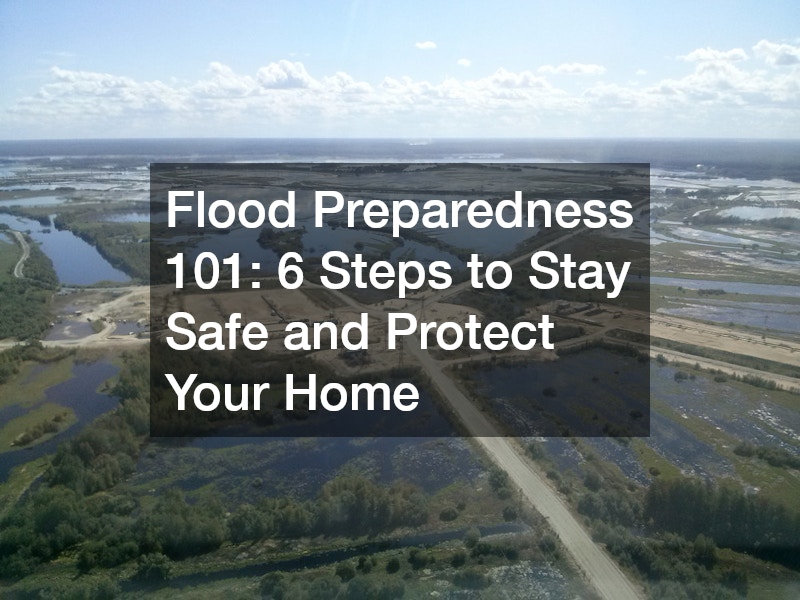It goes without saying that flooding is a devastating and unpredictable event, but being prepared can make a significant difference in protecting you and your property. Flood preparedness involves not only understanding the risks but also taking proactive steps to mitigate potential damage. Here’s a comprehensive guide to help you stay safe and safeguard your home in the event of a flood.
1. Prepare Your Home
Elevate Valuables and Hazardous Substances
One of the first steps in flood preparedness is to secure your valuables and hazardous materials. Place important documents, sentimental items, and hazardous substances such as chemicals or medications on elevated surfaces as high as possible.
This helps prevent these items from being damaged or causing additional problems during flooding.
Prepare Disaster and First Aid Kits
Having a well-stocked disaster kit and first aid kit is essential. Your disaster kit should include non-perishable food, water (at least one gallon per person per day for three days), a flashlight, batteries, a multi-tool, and any necessary medications. The first aid kit should contain basic medical supplies to treat minor injuries and illnesses. Ensure these kits are easily accessible and kept in a waterproof container if possible.
2. Follow Authorities’ Instructions
Stay Informed
During a flood, it’s crucial to stay informed about the evolving situation. Follow instructions from local authorities through TV, radio, or official social media channels. They will provide updates on the flood’s progress and any necessary evacuation orders. Ignoring these instructions can put you at risk.
Seal Your Home
If a flood is imminent, take immediate steps to protect your home. Close all doors and windows, and seal any low-lying gaps or openings with cloth or adhesive tape. This can help minimize the amount of water entering your home and reduce potential damage. Additionally, turn off the gas and electricity supply at the mains to prevent hazards such as fires or electrical shorts.
3. Evacuation Procedures
Move to Higher Ground
If you have an upper floor in your home, relocate there to avoid floodwaters. Elevated areas offer a safer refuge during rising waters. Stay updated with the latest information from authorities and follow their evacuation instructions carefully. Do not wait until the last moment to evacuate if advised to do so.
Communicate Your Plans
If you need to leave your home, inform friends and family about your departure and your intended destination. This ensures that someone knows your whereabouts in case of an emergency and can assist you if needed.
4. Safety During a Flood
Avoid Flooded Areas
Never attempt to cross flooded areas on foot or by vehicle. Water levels can be deceptive, and even shallow-looking water can be dangerous. The current may be stronger than it appears, posing a serious risk of being swept away. Most importantly, stay away from fallen electrical power lines, as they pose a significant risk of electrocution.
Drink Safe Water
In the event of a flood, ensure that any water you consume is safe. Floodwaters can contaminate drinking supplies, so rely on bottled or purified water when possible. If you must use tap water, make sure it has been properly treated or boiled to ensure its safety.
5. Post-Flood Considerations
Check for Damage
Document the damage for insurance purposes and contact professionals to assess and repair any significant issues. Professional restoration services like an emergency water damage restoration company can help mitigate further damage and restore your home to its pre-flood condition.
Prevent Future Flooding
To reduce the risk of future flooding, consider implementing preventive measures. Evaluate whether your home is in a flood-prone area and explore options for floodproofing your property, such as installing flood barriers or improving drainage systems. Regularly check and maintain sump pumps and ensure that gutters and downspouts are clear of debris.
6. Special Considerations
For Families with Children
If you have children, be aware of the measures in place at their schools for flood situations. Ensure that school staff are informed about any special needs your children may have, and stay updated on how the school handles emergencies.
For Those with Special Needs
If you have special needs or require additional assistance, inform emergency services in advance. This ensures that appropriate support is available during a flood, and that you receive the help you need to stay safe.
Key Takeaways
Being prepared for a flood involves careful planning and prompt action. By elevating valuables, preparing emergency kits, following authorities’ instructions, and taking safety precautions, you can significantly reduce the risks associated with flooding. Stay informed, communicate your plans, and implement preventive measures to protect your home and ensure the safety of your family. With these essential steps, you can protect what matters most.
.


